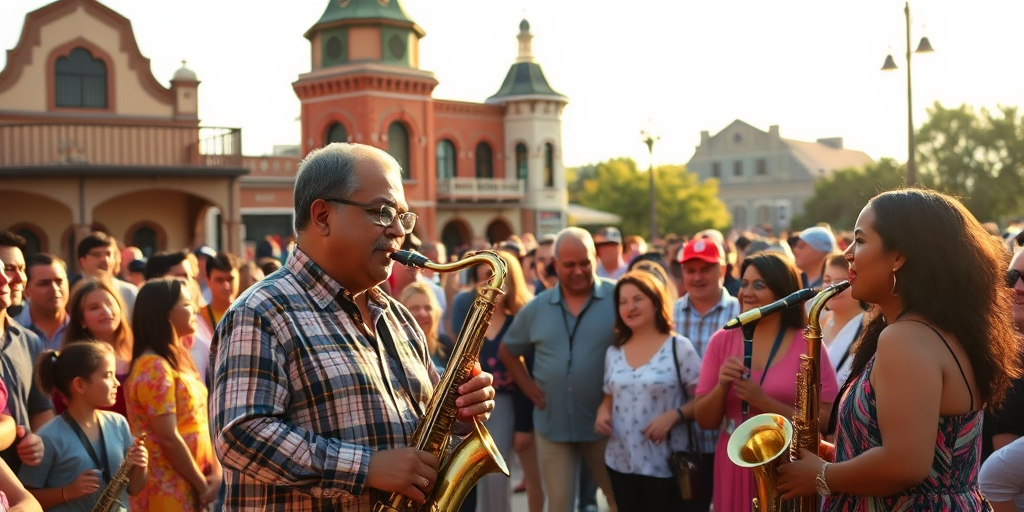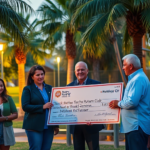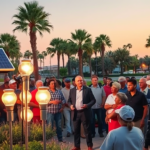Made in the 956: Reflecting on Ernesto Marroquin’s Legendary Saxophone Career
In celebration of enduring artistry in the Rio Grande Valley (RGV), “Made in the 956” brings attention to the extraordinary musical journey of Ernesto Marroquin, a saxophonist from San Benito whose melodies span nearly a century. Born during the Great Depression, Ernesto’s unwavering dedication and innate talent have inspired generations of musicians throughout South Texas.
Tracing the Roots of a Musical Legacy
Ernesto Marroquin was born in Kingsville, Texas in 1925 and developed a profound love for music early in life. His first foray into the world of music came by observing his aunt as she performed on the piano. Despite the struggles of the Great Depression, Ernesto transformed his skills into a source of joy and sustenance, sharing his passion at local gatherings where he received nickels and dimes from appreciative listeners.
“I was on Cloud 9,” Ernesto recalls, describing his earliest performances that offered both financial relief and budding recognition to a young musician in hard times.
The Gift of Musical Memory
As his abilities evolved, Ernesto began playing the clarinet and eventually the saxophone. Rather than relying on sheet music, Ernesto exhibited a remarkable aptitude for playing by ear, capturing and replaying intricate melodies after just one listen. His son, Mario Marroquin, speaks of his father’s gift with pride:
“He’s got a gift from God. He can play by ear; you can play a song to him, and he can play it right back without practice,” Mario noted, underscoring Ernesto’s exceptional auditory memory that defined his career.
This skill opened doors to collaboration with legendary acts, securing Ernesto’s place among musical greats.
Collaborations with Legends of Music
Throughout his career, Ernesto’s saxophone playing was sought after by prominent musicians. He recorded with icons such as Freddy Fender, Narciso Martinez, and Marlina Bustos. His association with Falcon Records, based in the Valley, solidified his role in shaping regional music culture.
“It’s very exciting and fulfilling,” Ernesto shared, reflecting on the privilege to work alongside respected artists and contribute to the music landscape in the RGV.
A Community Inspired by Music
Ernesto Marroquin’s legacy extends beyond music; it offers a testament to the enduring cultural and artistic spirit of Valley residents. He exemplifies how local talent can shine on larger stages while remaining deeply tied to their roots in South Texas.
His story resonates as a beacon of community interest, appealing to young musicians seeking inspiration from those who paved the way. “If you have passion, reach for the stars,” Ernesto’s experiences encourage youth to pursue music against odds.
Impact on Present-Day Valley
Today, the echoes of Ernesto’s saxophone are intertwined with ongoing efforts to nurture and preserve local culture. The importance of accessibility is reflected in endeavors like the Roma museum’s current project to digitize historical artifacts, ensuring that future generations can learn and draw inspiration from their heritage.
Furthermore, community initiatives such as the RGV Vipers’ “Blocks for Books” emphasize the importance of educational outreach, underpinning a broader trend towards cultural enrichment and community development across the Valley.
Future Implications for the RGV Community
Looking forward, Ernesto Marroquin’s story exemplifies the vibrant tapestry of Rio Grande Valley’s musical heritage. It highlights a model for cultivating local art while maintaining relevance and accessibility across generations.
In a broader context, Ernesto’s journey prompts reflection on how communities can balance preserving the past with welcoming future innovation. As the RGV embraces digital trends and collaborative projects in education, sports, and agriculture, these cultural pillars will undoubtedly continue to shape the Valley’s identity.
Community members interested in learning more about Ernesto’s contributions can explore local displays at events celebrating “Made in the 956,” which spotlight influential figures from the area. Similarly, aspiring musicians are encouraged to engage with local resources and support networks that promote talent development across South Texas.
In conclusion, Ernesto Marroquin’s journey from the echoes of the past to present admiration captures the indomitable spirit of RGV culture. His story serves as a reminder of the power of music to transcend time, touching lives and inspiring future generations. Ernesto Marroquin, the embodiment of “Made in the 956,” remains an indelible part of the Valley’s vibrant history.







